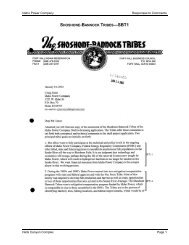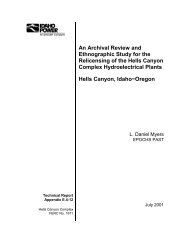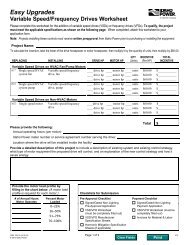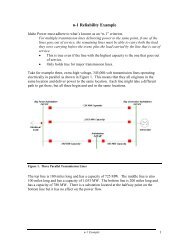Hells Canyon <strong>Chukar</strong> <strong>and</strong> <strong>Gray</strong> <strong>Partridge</strong> Report, Ratti <strong>and</strong> Giudice 164.3.2. <strong>Gray</strong> <strong>Partridge</strong><strong>Gray</strong> partridge are monogamous. Both males <strong>and</strong> females attempt to breed in first yearafter hatch, but some excess males do not pair <strong>and</strong> presumably do not breed (Potts 1986). Thefemale chooses the male. Established pairs may remain together for life; however, mortality <strong>of</strong>mates is common <strong>and</strong> both sexes readily remate (Carroll 1993). Dates <strong>of</strong> pair formation varywith region <strong>and</strong> weather conditions, but generally during January-February. Male stays withfemale throughout incubation <strong>and</strong> brood rearing. Basic social group outside <strong>of</strong> the breedingseason is the covey. Coveys are usually family groups consisting <strong>of</strong> adult pairs <strong>and</strong> their<strong>of</strong>fspring. Coveys composed <strong>of</strong> unsuccessful breeders will form during summer <strong>and</strong> can makeup a substantial portion <strong>of</strong> coveys seen during fall <strong>and</strong> winter (Carroll 1993). Covey mixingduring late fall has been documented (Mendel 1979, J. T. Ratti, unpublished data).Egg laying usually begins in April-May. Peak clutch initiation occurs early to late May.Persistent renester when nest is destroyed, with as many as 4 nests in a single season (Jenkins1961a, Birkan et al. 1990). Clutch size 10-20 eggs, with a mean <strong>of</strong> 13.8; however, clutch sizedeclines during the season <strong>and</strong> with each successive renest (Carroll et al. 1990). Rate <strong>of</strong> egglaying about 1.1 days/egg (McCabe <strong>and</strong> Hawkins 1946). Incubation about 21-26 days; 25 daysprobably average (Carroll 1993). Peak <strong>of</strong> hatching varies annually but early to mid-June ineastern Washington during 1940-42 (Knott et al. 1943) <strong>and</strong> late June to early July in <strong>Idaho</strong>during 1976-78 (Mendel 1979). However, based on examination <strong>of</strong> wings collected fromhunters, Mendel (1979) concluded that gray partridge inhabiting canyons along the Potlatch,Clearwater, <strong>and</strong> Snake rivers had more concentrated hatching dates <strong>and</strong> a later hatching peakthan birds nesting on the Palouse Plateau, which probably reflected differences in farmingdisturbances <strong>and</strong> spring weather.<strong>Gray</strong> partridge exhibits synchronous hatching, although 24 hours may elapse betweenemergence <strong>of</strong> first <strong>and</strong> last chick. Chicks completely down-covered at hatch <strong>and</strong> mobile withinhours; usually leave nest with adults within 1 day. Both male <strong>and</strong> female brood young. Youngdo not feed for 24 hr after hatching. Adults induce chicks to feed by repeatedly dropping food infront <strong>of</strong> chicks, but not by passing food directly to them. Chicks are capable <strong>of</strong> short flights in
Hells Canyon <strong>Chukar</strong> <strong>and</strong> <strong>Gray</strong> <strong>Partridge</strong> Report, Ratti <strong>and</strong> Giudice 170.7:1.0 in 1959, <strong>and</strong> 7.1:1.0 in 1969 (Christensen 1970). Low age ratios occurred during years <strong>of</strong>drought. In Oregon, Walter (2000) reported October age ratios <strong>of</strong> 1.3:1.0 in 1997 <strong>and</strong> 3.1:1.0 in1998. Lindbloom (1998) observed 60% brood survival (n = 5) in 1996.Juveniles <strong>and</strong> adults.— Although little data exists, general observations suggest chukarshave high mortality rates <strong>and</strong> relatively short life spans. Walter (2000) reported 29-68% springfallsurvival in eastern Oregon. Lindbloom (1998) reported 48% (SE = 10%) spring-summersurvival in western <strong>Idaho</strong>. About 51% <strong>of</strong> observed mortality in Oregon was due to predation(59% avian <strong>and</strong> 41% mammalian). In <strong>Idaho</strong>, avian <strong>and</strong> mammal predators accounted for 60%<strong>and</strong> 40% <strong>of</strong> known mortalities, respectively (Lindbloom 1998). Christensen (1970) concludedthat over-winter survival was a potential limiting factor. However, Lindbloom (1998) suggestedthat spring-summer mortality might be more important than previously realized.4.4.2. <strong>Gray</strong> <strong>Partridge</strong>Eggs, nests, <strong>and</strong> chicks.— Church (1984) summarized 10 North American studies <strong>and</strong>mean nest success was 32% (range: 16-40%). In the Palouse Prairie <strong>of</strong> <strong>Idaho</strong>, nest success was12% (n = 17) in 1976 <strong>and</strong> 63% (n = 8) in 1977 (Mendel 1979). In Whitman County,Washington, nest success was 37% (range: 32-44%; n = 113) during 1940-42 (Knott et al. 1943).Egg hatchability in North American studies ranged from 68-91% , but most studies reported rates<strong>of</strong> 85-90% (Carroll 1993). Estimated hen success ranged between 41-82%. No data on lifetimereproductive success. In North America, chick-survival rates varied among regions, e.g., 57-75% in North Dakota (Carroll et al. 1990), 50-66% in Wisconsin (Gates 1973, Church 1980,Church 1984), 59% in Washington (Yokom 1943), <strong>and</strong> 29-47% in New York (Enck 1987,Church 1993). Survival rates <strong>of</strong> chicks in Great Britain ranged from 19-67%, with variation duemostly to abundance <strong>of</strong> insect foods during the first few weeks <strong>of</strong> life (Potts 1986). Likewise,chick survival in New York was correlated with insect abundance <strong>and</strong> biomass (Enck 1987).Juveniles <strong>and</strong> adults.— <strong>Gray</strong> partridge generally have a short life span <strong>and</strong> high mortalityrates. For winter-captured birds in Montana, life expectancy was 1.8 years for adults, 0.9 yearsfor immature males, <strong>and</strong> 0.8 years for immature females; maximum longevity was 4 years(Weig<strong>and</strong> 1980). For adults, highest mortality rates are for nesting females <strong>and</strong> during winter(Potts 1986, Carroll 1993). In Montana, relative survival (based on age <strong>and</strong> sex ratios <strong>of</strong> wingscollected from hunters) <strong>of</strong> juvenile gray partridge was similar for males <strong>and</strong> females (Swenson1985). Ratti et al. (1983), based on seasonal changes in density, estimated that post-huntingwinter mortality was 56% (SE = 14) in South Dakota during 1979-80. Church <strong>and</strong> Porter(1990a) estimated 58% mortality (mostly subadults) over a 2-week period in early February inNew York. Rotella et al. (1996) analyzed seasonal <strong>and</strong> long-term changes in Perdix density onthe Palouse Prairie during 1940-85, <strong>and</strong> concluded that average fall-<strong>and</strong>-winter mortality wasrelatively low (29%). However, mortality was influenced by density-dependent <strong>and</strong> densityindependenteffects, e.g., winter mortality was 58% in a high-density year (1983-84) <strong>and</strong> 78% inthe severe winter <strong>of</strong> 1984-85 (Rotella et al. 1996). In North Dakota, survival <strong>of</strong> radiotaggedpartridge (n = 55) from early January to 1 May (1985-87) was 28%. However, survival wasinfluenced by release effect (34% mortality during 1 st week post-release), body mass at capture(birds weighing >400 g had higher survival [50%] than those weighing
















